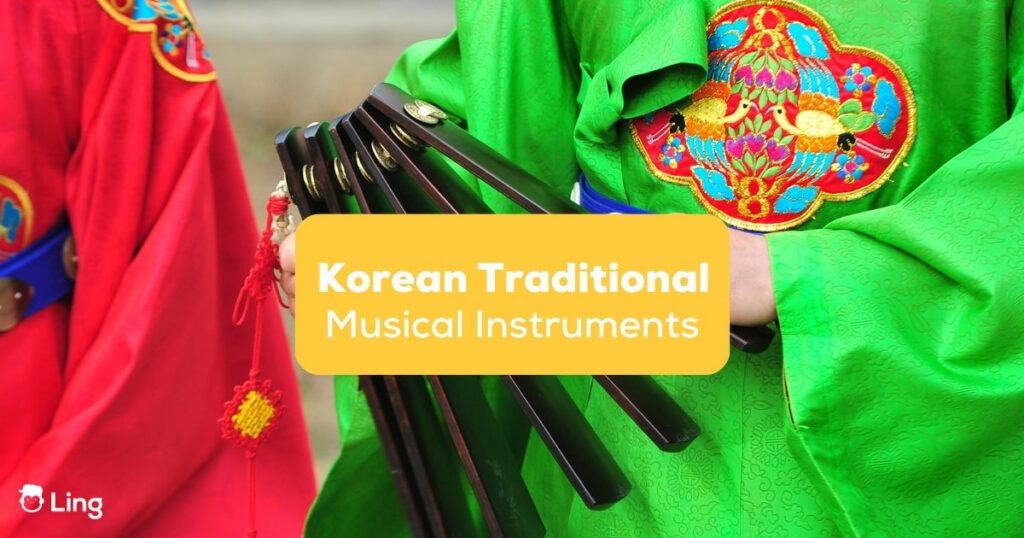The K-Pop industry has dominated the hearts of most people these days. However, behind the beauty of these genres lie traces of the supremacy of Korean traditional music. Do you want to take a little trip to their culture and learn about Korean traditional musical instruments? Prepare to be amazed by the roots of these musical pieces we adore today!
Amidst the rolling hills and ancient traditions of the Korean peninsula, a captivating symphony of sound has echoed through the centuries, carried on the delicate wings of its traditional musical instruments. These instruments, each possessing a soul of its own, weave a mesmerizing tapestry of melodies that transcends time and connects modern generations to the echoes of their ancestors.
As we embark on a journey through the treasure trove of Korean traditional musical instruments, we are invited to unlock the secrets of their unique timbres, explore the finesse of their playing techniques, and immerse ourselves in the cultural significance they hold— an enchanting overture to the timeless heritage of Korea’s musical past.
Korean Traditional Musical Instruments
Traditional Korean music is rich in cultural heritage and features a variety of unique musical instruments. Their instruments encompass a diverse range of instruments that have been integral to the country’s musical heritage for centuries. They’re even classified into various categories based on their characteristics and sound-producing mechanisms. Here are some examples of traditional Korean musical instruments:
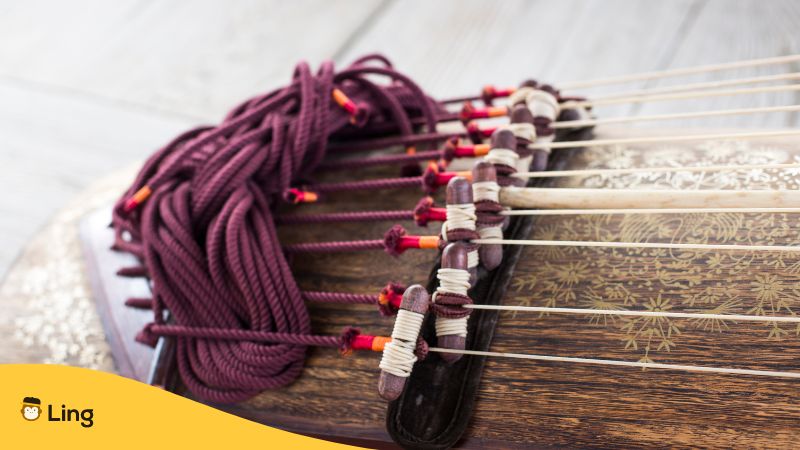
1. Gayageum (가야금)
The Gayageum (가야금) is a zither-like instrument with 12 strings, although there are variations with 18 or 25 strings. It is played by plucking the strings with a bamboo stick or fingerpicks. This unique string instrument is one of the most representative traditional instruments in Korean music.
If you’re a skilled player, you may use a variety of playing techniques, including “Sul Tari,” which involves plucking the strings with the thumb and the first two fingers. While there’s also “Ap tari,” which involves pulling the strings with the fingernails. You may also play it with a bow or by pressing the strings against the wooden bridges with the left hand while plucking with the right hand.
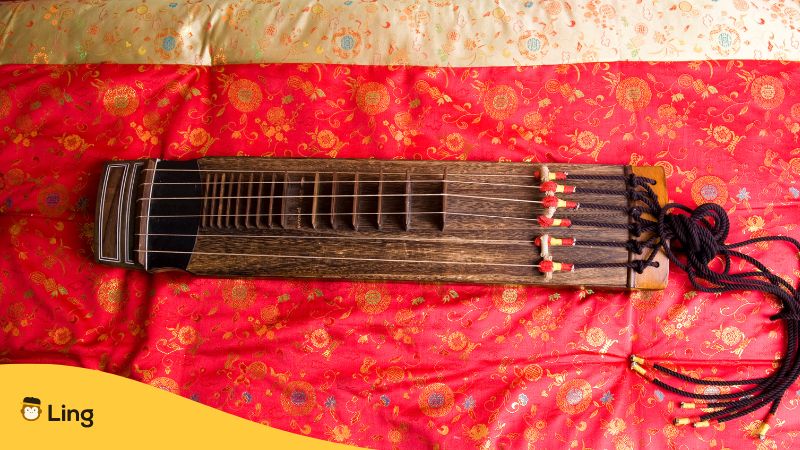
2. Geomungo (거문고)
The Geomungo (거문고) is another type of zither with six strings. It has a wooden body and is played by plucking the strings with a bamboo stick. The sound produced by the geomungo is deep and resonant. In terms of its size, it’s a distinctively large, rectangular shape with a wide body and a hollow wooden soundboard.
It’s versatile and can be played as a solo instrument or as part of an ensemble. This unique device plays a vital role in various traditional Korean music genres, including court music, folk music, and sanjo (a solo instrumental genre). What’s even more interesting is it has been adapted for contemporary music, and modern musicians experiment with it to create new sounds and fusions with other genres.
3. Daegeum (대금)
The Daegeum (대금) is a traditional wind instrument, and it is one of the most iconic and versatile wind instruments in Korean traditional music. It has a rich history and is deeply rooted in Korean culture. However, it’s important to remember that the quality and characteristics of the bamboo used can significantly affect the sound of the instrument helping it create a different pitch.
This Korean flute’s sound is rich and expressive, and skilled players can produce a wide range of tones and dynamics. You can tune it to various scales, allowing it to be used in different traditional Korean music genres and ensembles.
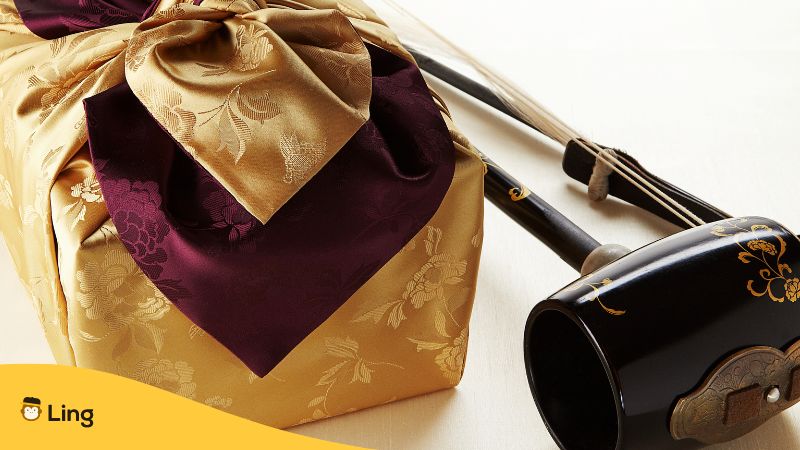
4. Haegeum (해금)
The Haegeum (해금) is a percussive bow string instrument that has a soundbox made of paulownia wood and is played by pressing the strings against the bow with the player’s fingers. Its distinctive soundbox is covered with snake or python skin, which amplifies the sound produced by the strings. While the instrument’s shape resembles a narrow tube or a slightly elongated hexagon.
You might wonder, how does it exactly work? A talented musician uses a bow made of horsetail hair. It is held between the strings, and the player pulls or pushes it to create sound. The Haegeum player can produce a variety of sounds, including slides, vibrato, and glissandos, making it a highly expressive instrument.
5. Piri (피리)
The Piri (피리) is a traditional Korean double-reed woodwind instrument. It is one of the oldest and most iconic wind instruments in Korean music and plays a significant role in traditional Korean folk, court, and ritual music. It has a cylindrical tube with a distinctively flared bell at the bottom. The number of finger holes on the front can vary, but it usually has six or seven finger holes.
When playing the Piri, the musician places their lips on the double reed and blows air, causing it to vibrate. They then cover or uncover the finger holes to produce different pitches and create melodies. Its tone can bring your ears to cloud-9 as it can vary from hauntingly soft and ethereal to vibrant and dynamic, making it capable of expressing a wide range of emotions.
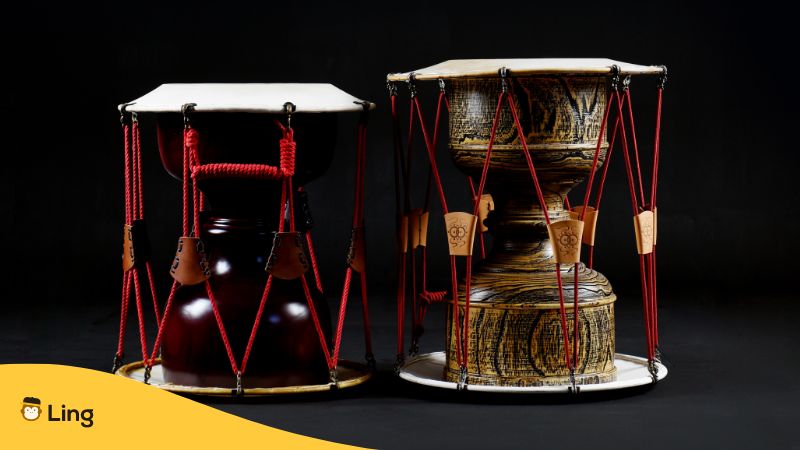
6. Janggu (장구)
The Janggu (장구) is a traditional Korean percussion instrument and is one of the most representative and popular drums in Korean music. Its unique hourglass shape and versatile sound have made it an integral part of various traditional Korean music genres, dance performances, and cultural events.
It has two drumheads, the “buk” (the larger head) and the “Changgo” (the smaller head). The bigger one is struck using the right hand, while the latter is pounded with the left hand. People who know how to play it use diverse striking techniques to produce a wide range of sounds and tones, including finger, palm, and special drumstick strikes called “Tte” and “Jjangtte,” which allow for variations in timbre and dynamics.
7. Yanggeum (양금)
Yanggeum (양금) is a traditional Korean string instrument known as a hammered dulcimer. Unlike other traditional Korean instruments, which typically have silk strings, this one features metal strings. Musicians play it by striking the strings with a bamboo stick.
Moreover, its name translates to “Stringed instrument of the West” (Yang), and it’s also referred to as “Seoyanggeum” (Western stringed instrument) or “Gura Cheolsageum” (European metal stringed instrument). During performances, the musician employs a thin bamboo strip to strike the strings with their right hand, creating captivating melodies and harmonies.
8. Danso (단소)
Are you intrigued by the most popular Korean wind instrument? Well, here we have Danso (단소), which is a simple bamboo transverse flute with six finger holes. It is popular in various genres of Korean traditional music, including court music, folk music, and contemporary compositions. Its name translates to “short flute” in Korean, referring to its relatively compact size.
This versatile instrument is equally capable of performing delicate melodies or playing lively and spirited tunes. It is frequently used as a solo instrument or as part of traditional Korean music ensembles. Trying it out yourself would surely challenge and excite you!
Did You Enjoy This Post? Try Ling Today To Learn More!
There are plenty more traditional Korean musical instruments that we didn’t get to introduce. But we bet that these winds, string, and percussion instruments were enough to get a glimpse of the beauty of the traditional musical items in South Korea. By any chance, did we tempt you to learn more about their language? If so, Ling can be your buddy in your voyage to learn a new language!
Using 20 minutes of your time with the app, you can unlock new sets of words and phrases, helping you attain mastery over your chosen language. You’re free to pick from the 60+ languages that it offers! Plus, there are different quizzes and exercises waiting for your attention. Download Ling today for FREE on Play Store and App Store to begin your journey!
